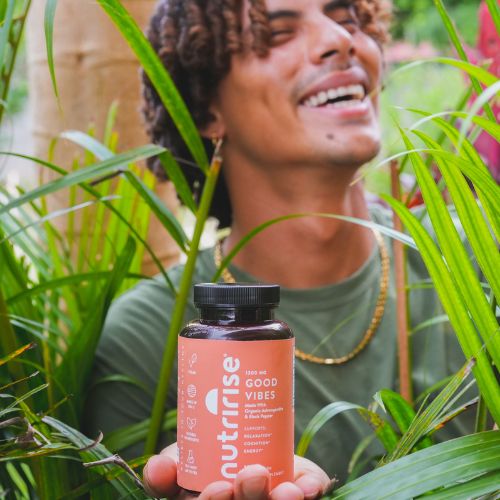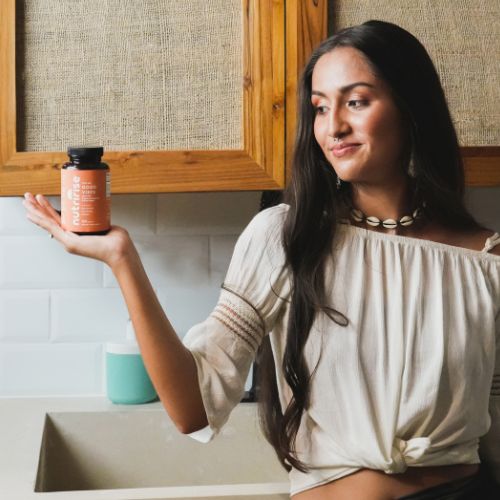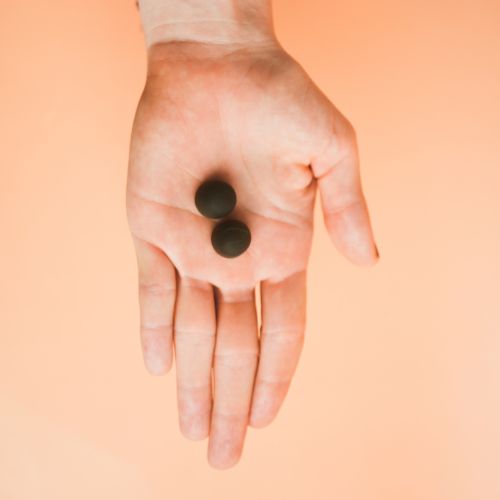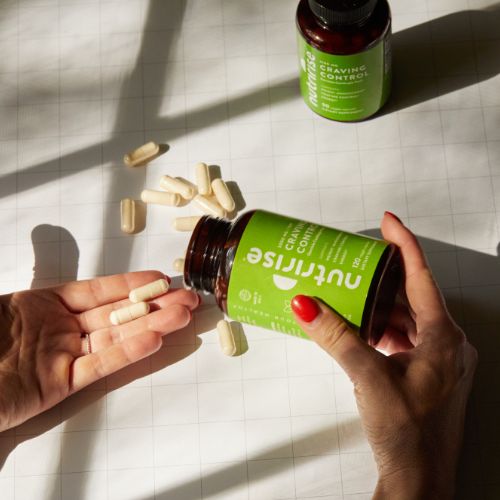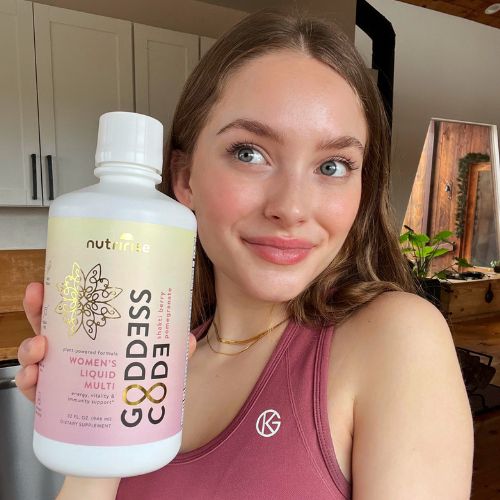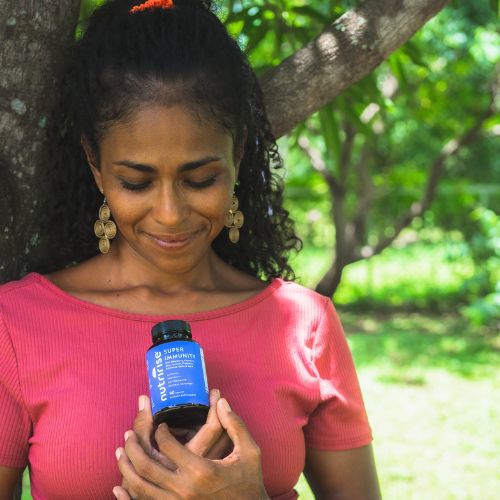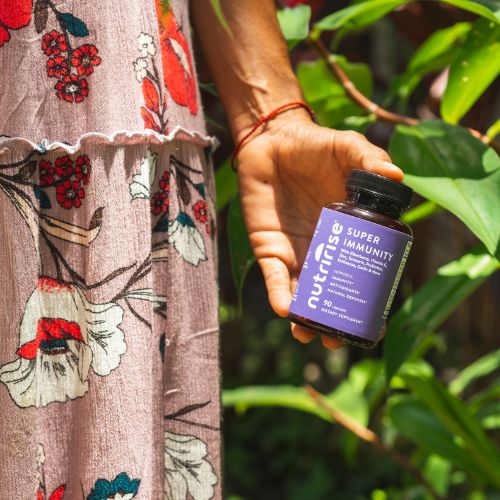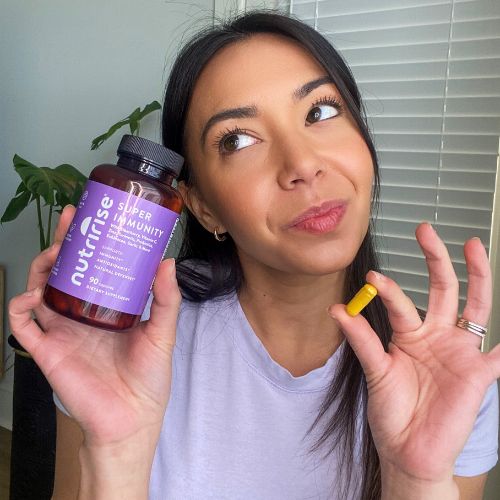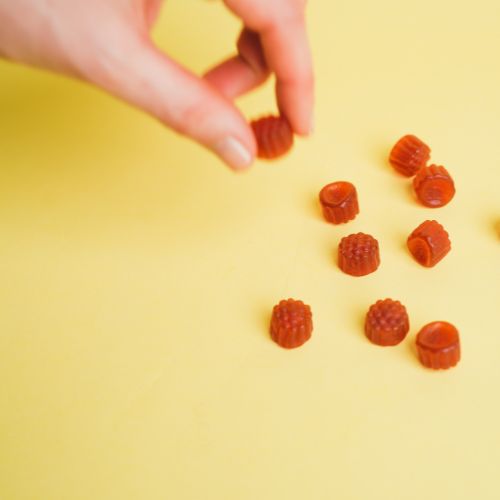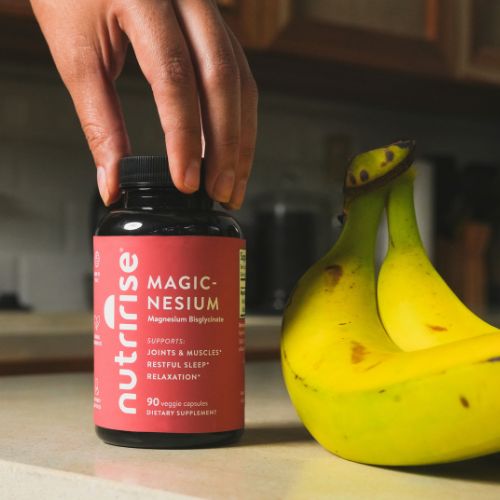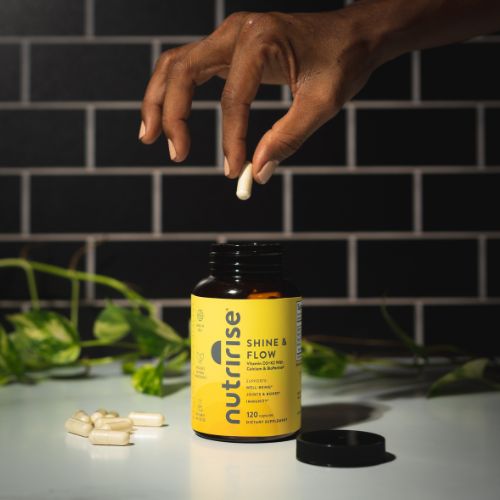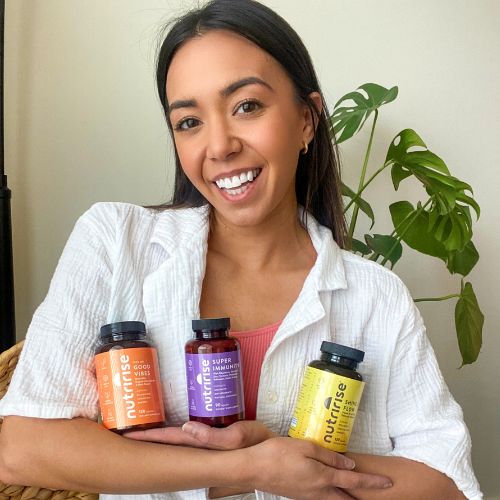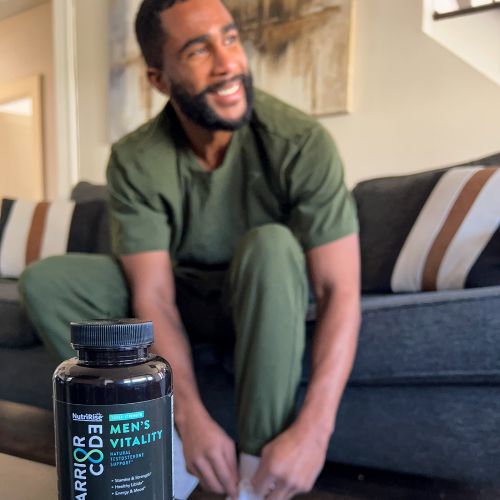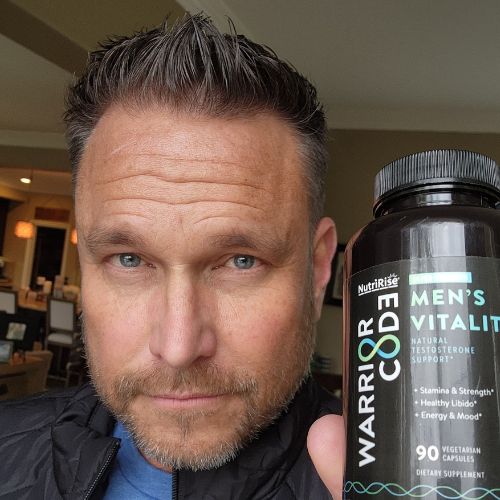What is blood pressure, and what does hypertension mean?
Blood pressure is the force that blood exerts on the blood vessels while it's flowing through the body.
This force plays a crucial role in cardiovascular health. Studies have shown that rising blood pressure, even within the normal range, can increase the risk of heart disease [1].
This may happen due to increased cardiac output or constricted blood vessels, which increases the blood flow pressure through them.
Rising blood pressure increases the risk of cardiovascular problems because the blood flow can become turbulent as it moves through the vessels.
This turbulence can damage the vessel wall, which is a prerequisite for narrowing, thrombosis, blockage, and even rupturing the affected vessels.
This mechanism can lead to an increased risk of heart attacks, strokes, and brain hemorrhages - the most common and deadly complications of cardiovascular disease.
Normal blood pressure is 120/80 mm-Hg (millimeters of mercury - a unit for measuring pressure) or lower but no less than 90/65 mm-Hg. The two values are the upper and lower limits of a blood pressure reading.
It is correct to call these limits systolic and diastolic pressure, respectively.
Systolic pressure is the value displayed first - it is higher because it reflects the pressure during contraction (systole) of the heart muscle.
Diastolic pressure is the second value - it is lower because it reflects the pressure during the relaxation (diastole) of the heart.
What is normal blood pressure by age?
Before 2017 there were different cut-off points for normal blood pressure depending on age.
But according to the 2017 American College of Cardiology and American Heart Association guidelines, levels above 130/80 indicate high blood pressure regardless of age [2].
|
Category
|
Systolic (mmHg)
|
Diastolic (mmHg)
|
|
Low Blood Pressure
|
≤90
|
≤65
|
|
Normal Blood Pressure
|
<120
|
<80
|
|
Increased Blood Pressure
|
120-129
|
<80
|
|
1st Degree of Hypertension
|
130-139
|
80-89
|
|
2nd Degree of Hypertension
|
≥140
|
≥90
|
|
Hypertensive Crisis
|
≥180
|
≥120
|
In addition, we can also have isolated systolic hypertension (most often in the elderly) and isolated diastolic hypertension.
There is also the so-called "white coat hypertension." It occurs when the patient experiences anxiety immediately before the examination or measurement, leading to a short-term increase in blood pressure.
Major risk factors for high blood pressure
Genetic predisposition
High blood pressure and hypertension are more common in some families. If your parents are hypertensive, you are at an increased risk of developing the condition. However, no specific gene has yet been shown to confer this risk; instead, scientists have collected data on multiple genes that play a role [3].
Obesity
Obesity is another important risk factor for the development of hypertension, which develops as a result of maintaining a caloric surplus for an extended period. There are two sides to calorie balance; overeating and low physical activity can lead to obesity.
While the evidence that obesity leads to increased blood pressure is more than convincing, the exact mechanisms by which this happens are still being clarified. Most likely, obesity leads to an increase in blood pressure due to multiple factors [4].
These include adverse effects on kidney function, vasoconstriction due to changes in sympathetic tone, the release of various mediators from adipose tissue, and increased load on the heart muscle.
Unhealthy habits and stress
Smoking and alcohol can damage the heart and blood vessels, leading to constriction, reduced elasticity, and increased blood pressure. Stress can also lead to increased blood pressure and even hypertension. This happens because, during stress, the sympathetic nervous system is activated.
As the name suggests, this is part of the autonomic nervous system, which we cannot consciously control. It puts the body into "fight or flight" mode, associated with an accelerated heart rate, increased blood pressure, dilated airways, etc.
What foods cause high blood pressure?
Foods high in sodium and low in potassium can disturb the balance between the two. This imbalance between sodium and potassium intake is perhaps the main behavioral factor that affects blood pressure.
This is because the ions of these two elements are important electrolytes and essential micro-nutrients for the human body that help our body balance the amount of water in the vessels [5].
The recommended sodium and potassium intake is about 2-3 grams daily. When sodium intake is significantly higher than potassium intake, it leads to water retention in the body and increased blood pressure.
One of the most significant sources of sodium in modern man's diet is table salt and processed foods (fast foods, sausages, and junk food). Because of this, most of the diet recommendations for treating high blood pressure are based on limiting table salt.
Furthermore, processed foods are not only high in sodium, but they are also high in calories. Unfortunately, most convenience foods' high sugar and salt content make them appealing and often over-consumed.
Of course, overeating any food can also lead to a calorie surplus, but avoiding saturated fat, salt, and added sugar can be a positive start to a more healthy diet.
What foods can lower blood pressure?

When it comes to nutrition, the best foods for high blood pressure are whole and unprocessed foods. This includes whole fruits, fresh vegetables, whole grains, fish and seafood, low-fat dairy products, fat-free meats, legumes, and more.
Most foods will have only a minor effect on your blood pressure. Nevertheless, it's important to note that even a reduction of as little as 5 mmHg in blood pressure can significantly reduce the risk of complications such as cardiovascular disease and strokes.
Keep in mind that the benefits of these foods regarding blood pressure occur when you consume them regularly and use them instead of foods high in calories and sodium, such as processed foods.
Food preparation methods are also important. Techniques such as frying are not suitable due to the final product's high calorie and salt content. Instead, they should be replaced by baking, boiling, grilling, stewing, etc.
Low-fat dairy
Milk and yogurt are vital because of their high potassium content and favorable potassium/sodium ratio. This is why they are classified as one of the top food contributors to potassium in our diets [6].
According to an evidence-based literature review, there is solid evidence that low-fat dairy products help reduce blood pressure levels [7].
Examples of one serving of low-fat dairy are 1 cup of milk, 200 g of yogurt, or 1 ½ ounces of cottage cheese. The recommendation is to consume 2-3 servings of low-fat dairy a day.
Fresh fruits and vegetables
Fruit and vegetables are excellent sources of potassium, magnesium, and other essential nutrients which help your body maintain normal blood pressure levels.
Thus, one of the most effective diets for lowering blood pressure, the popular DASH diet (Dietary Approaches to Stop Hypertension), recommends consuming at least 4-5 servings of fruits and vegetables per day.
Indeed, the research clearly shows that consuming more than 400 g of fruits and vegetables a day can help lower both systolic and diastolic blood pressure [8].
Make sure to choose a variety of fruits and vegetables for your meals-they to provide vitamins and minerals, antioxidants, and fiber and are essential for the digestive system.
Different colors offer different health benefits and nutrients so that you can have a palette of red and green peppers, zucchini, cucumbers, tomatoes, carrots and beets, spinach, and others to your taste.
Dark chocolate
Dark chocolate is one of the few sweet treats that are also heart-healthy and can help lower blood pressure levels.
This benefit is mainly because of the high cocoa content, a potent vasodilator. Studies show that cocoa extracts can help blood vessels relax and support normal blood flow [9].
A massive meta-analysis of 13 studies revealed that regular consumption of dark chocolate with 50-70% cocoa content was associated with a higher reduction in blood pressure levels than a placebo [10].
The researchers also noted that dark chocolate was most effective in lowering the blood pressure of individuals with systolic blood pressure above 140 mm-Hg.
Garlic
Certain spices can also help lower blood pressure, and one of the best examples is garlic, thanks to its alliin content.
When garlic is physically disturbed through chewing, slicing, or crushing, it releases an alliin metabolite: allicin.
Allicin turns into a variety of fat- and water-soluble sulfur-containing compounds, including hydrogen sulfide, which is part of garlic's unmistakable smell and taste.
By interacting with the hydrogen sulfide signaling system in your body, garlic also relaxes the blood vessels, which helps lower blood pressure levels.
Studies show that chronic garlic consumption helps lower blood pressure and reduces the stiffness of blood vessels such as the aorta [11].
Supporting the elasticity of blood vessels is key for fighting heart disease and hypertension.
Fish and fish oil
Most high-fat foods are inappropriate for lowering blood pressure, but fatty fish is an exception.
Fatty fish like salmon are rich in heart-healthy omega-3 fatty acids, which help to reduce inflammation and may lower the risk of heart disease.
Moreover, studies show that omega-3s can help you maintain your blood pressure in a healthy range.
Research published in the June 2012 issue of the British Journal of Nutrition reveals that increased intake of omega-3s reduces blood pressure among elderly patients and those with hypertension [12].
This makes salmon and other species of fatty fish, such as mackerel, sardines, etc., an excellent protein-rich food option for anyone whose blood pressure has begun to rise.
What else can you do to lower your blood pressure?
Apart from a dietary approach, you can also implement lifestyle changes such as stopping smoking, reducing alcohol use, managing stress, maintaining a healthy weight, and increasing physical activity.
In addition, if you suspect you have high blood pressure, it is best to see your GP or specialist cardiologist first. If your blood pressure measurement is above 180/120 or is accompanied by worrying symptoms, seek emergency medical attention.
Your doctor, GP, or specialist, will be best trained to assess which blood pressure medication would be most suitable for bringing down high blood pressure and preventing complications.
Depending on your blood pressure levels and comorbidities, the doctor will prescribe one or more medications. The most commonly prescribed medications to control high blood pressure come from the following groups:
- ACE and AT inhibitors
- Beta-blockers
- Calcium antagonists
- Diuretics
Depending on the drug, the treatment effect usually occurs within a few hours or days.
Keep in mind that in many cases, lifestyle and dietary changes can lead to a dramatic improvement in hypertension so give your body all the help you can. Look into the Dash and Mediterranean diet for inspiration on easy dishes to prepare. It's never too late to make changes for a healthier body.
Note: This article is for informational purposes only and not intended for use as medical advice. Always consult your healthcare provider before starting any dietary supplement.








